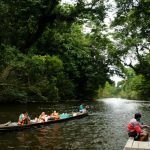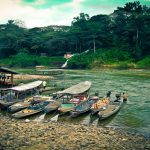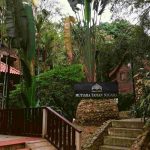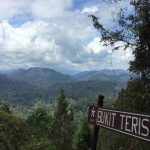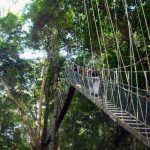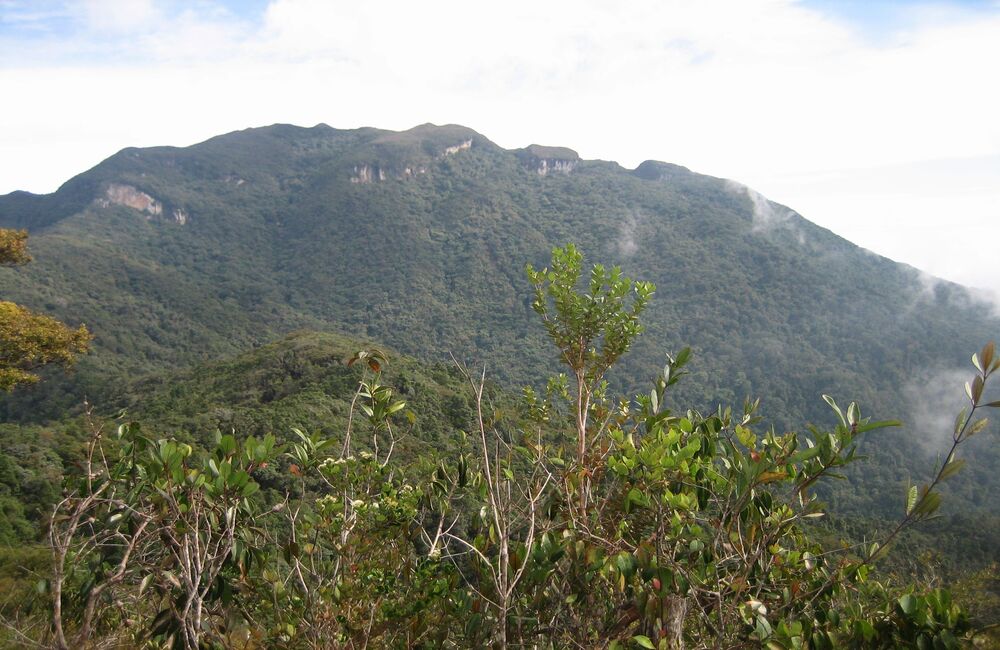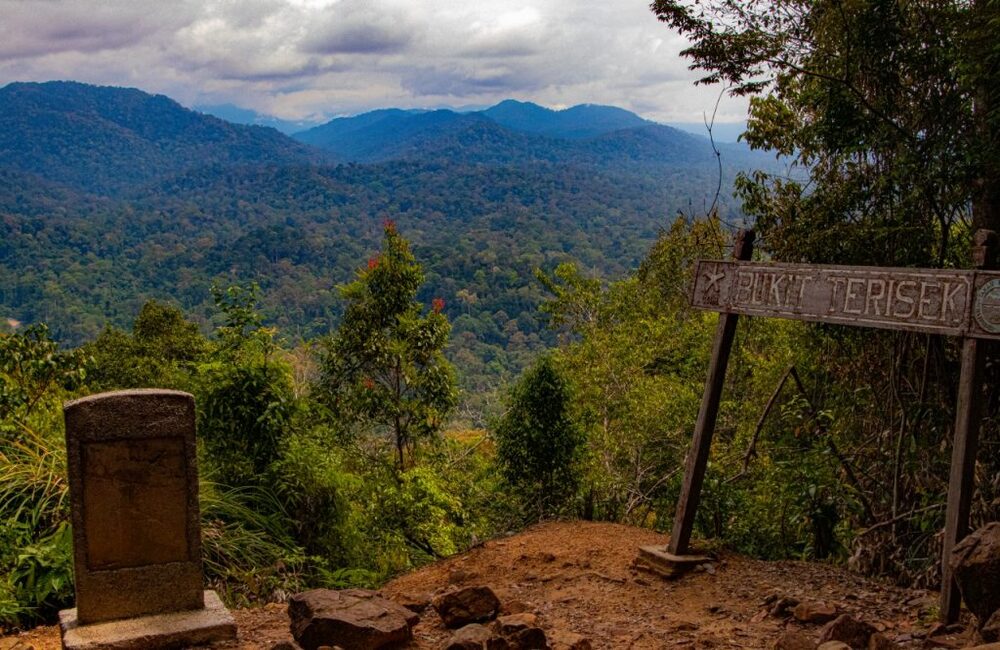Taman Negara, Malaysia Top Nature Destination
Experience walking on the world’s longest canopy walkway, visiting the aborigine village, trekking under rainforest canopy, climbing the highest mountain in Peninsular Malaysia, caving, fishing, camping, observing wildlife, and many more.
Taman Negara, Malaysia Top Nature Destination
A national park(Taman Negara) is a land owned by the state of MALAYSIA which is used as a natural protection area for flora and fauna, or historical material. By law, this area will be protected from any development. National parks are protected areas by the World Conservation Union Category II. The National Park is the first and oldest official Protected Area in the country and was once known as King George V National Park. Taman Negara is located between the borders of 3 states, namely Pahang, Terengganu, and Kelantan. Pahang National Park is the largest with an area of 2,477 km, followed by Kelantan National Park with an area of 1,043 km, and Terengganu National Park with an area of 853 km.
History
Taman Negara Malaysia opened in 1938/1939 as Taman Negara King George V. It was later renamed as Taman Negara after independence. Taman Negara (Pahang) Enactment No.2 in 1939 was made for Pahang, Taman Negara (Kelantan) Enactment No.14 in 1938 for Kelantan, and Taman Negara (Terengganu) Enactment No.6 in 1939 for Pahang. All enactments have the same content. Pahang National Park is the largest with an area of 2,477 km, followed by Kelantan National Park with an area of 1,043 km, and Terengganu National Park with an area of 853 km. This park is a famous eco-tourism destination in Malaysia. There are many geological and biological attractions in this park.
Natural Surroundings
Taman Negara, Malaysia’s premier national park, is one of the oldest tropical rainforests in the world, estimated to be over 130 million years old. Spanning three states — Pahang, Kelantan, and Terengganu — it covers more than 4,300 square kilometers of pristine jungle, rivers, and mountainous terrain. The park’s lush canopy, towering dipterocarp trees, and dense undergrowth provide a haven for an extraordinary diversity of flora and fauna, making it a true paradise for nature lovers and wildlife enthusiasts.
Visitors to Taman Negara can explore an intricate network of rivers, such as the Tembeling and Jelai, which wind through the rainforest and sustain both the ecosystem and local communities. The park is home to rare and endangered species, including Malayan tigers, Asian elephants, tapirs, and hornbills, as well as countless reptiles, amphibians, and insects. Birdwatchers and botanists alike will find the park a treasure trove, with over 350 bird species and thousands of plant varieties thriving in this ancient ecosystem.
Taman Negara also offers a range of immersive experiences, from trekking along jungle trails and climbing the towering Gunung Tahan — the highest peak in Peninsular Malaysia — to crossing the famous Canopy Walkway, suspended high above the forest floor. Waterfalls, limestone caves, and serene rivers provide natural resting spots along these journeys, while night safaris reveal the hidden nocturnal life of the jungle. The park’s combination of rugged mountains, dense rainforest, and meandering waterways captures the raw, untamed beauty of Malaysia’s wilderness, offering visitors an unforgettable encounter with one of the world’s most ancient and remarkable natural landscapes.
.
Tourism
The most popular activities in Taman Negara are river canoeing and jungle tracking. The Canopy Path here is very interesting because it gives tourists a close -up view of animal and plant activities in the forest canopy. Other activities include visits to Lata Berkoh for bathing, fishing on the Keniam River, and visiting indigenous villages.
Observation huts have also been set up for the safety of tourists to observe the wildlife here. Small huts that have been built high from the ground make it easy for tourists to spend the night to observe wildlife in the natural habitat. Tourists can also explore the caves either by boat or on foot.
The richness and diversity of natural life in the National Park is amazing and makes it one of the most complex and rich eco-systems in the world.
Transportation
By buses and taxis
Tourists can also take a bus to Jerantut which can be found at the Jalan Tun Razak Bus Station in Kuala Lumpur. From Jerantut, you can take a local bus or taxi to Kuala Tembeling.
By boat
The main entrance to Taman Negara is through Kuala Tembeling where tourists can board a sampan that leaves at 9.00 am and 3 pm every day (except Friday when the boat leaves at 2.30 pm), in a journey that takes 3 hours to to Kuala Tahan. Mutiara Taman Negara Resort also provides a speedboat service that only takes 45 minutes to reach Kuala Tahan. The speedboat departs from Kuala Tembeling at 10.30 am and 1.30 pm every day.
By train
The entrance to Taman Negara is Kuala Tembeling which is connected to Kuala Lumpur, Singapore and Kota Bharu (via Tumpat) by rail. Trains from these stations stop at Tembeling Halt, about half an hour’s drive from Kuala Tembeling jetty by car.
National Park
Taman Negara at a glance
![]()
- Country: Malaysia
- Area: 4,343 km2
Highlights
- Gunung Tahan: It is considered by many to be one of the toughest treks in Peninsular Malaysia
- Gua Telinga: Crawl in the dark, and get wet as you squeeze through the underground river tunnel. It is an adventure exploration engages you to find a real underground world.
- Canopy Walkway: This is an iconic of Taman Negara, regarded as the world’s longest canopy walkway.
- Bukit Teresek: View the superb panoramic of lowlands, hills, and mountains. Look at the rivers, spectacular grey-leafed Seraya trees in broad valley, Gunung Perlis and Gua Besar in Keniam.
- Lata Berkoh: You can see and photograph the natural beauty of Taman Negara
- Lubuk Simpon: You can swim and picnic.
Dos and Don’ts
- Hire a Licensed Guide: Trails can be challenging and dense—going with a guide ensures safety and a richer experience.
- Dress and Pack Properly: Wear lightweight, breathable clothes, sturdy shoes, and carry insect repellent, sunscreen, and plenty of water.
- Respect Wildlife and Nature: Observe animals from a distance, stay on marked trails, and follow “leave no trace” principles.
- Visit the Orang Asli Villages Respectfully: Ask before taking photos, listen to their stories, and support them by buying handicrafts.
- Try the Activities: Explore the canopy walkway, night jungle trekking, river cruises, and caving for a full experience.
- Don’t litter or Leave Food Behind: It harms wildlife and disrupts the ecosystem.
- Don’t feed the Animals: Monkeys and other wildlife can become aggressive or unhealthy if fed by humans.
- Don’t underestimate the Jungle: Weather changes quickly, paths get muddy, and leeches are common—always be prepared.
- Don’t play Loud Music or Make Excessive Noise: It disturbs wildlife and other visitors.
- Don’t ignore Park Rules: Fishing, hunting, or taking plants/animals from the park is strictly prohibited.
